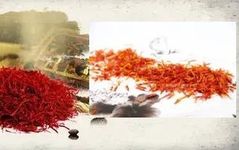
1. Differences Between Saffron and Carthamus
Saffron and Carthamus differ by just one character, often leading to confusion as the same medicinal substance. In fact, they belong to different plant families and have vastly different market prices.
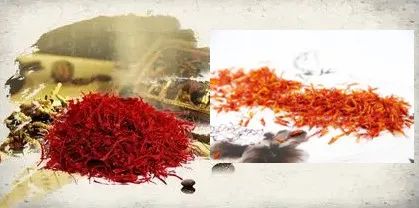
According to the 2020 edition of the Chinese Pharmacopoeia, the summarized information is as follows:




|
Saffron (Crocus sativus) |
Carthamus (Carthamus tinctorius) |
|
|
Source |
Dry stigma of the plant Crocus sativus from the Iridaceae family |
Dry flower of the plant Carthamus tinctorius from the Asteraceae family |
|
Alias |
Western saffron, saffron |
Thistle flower |
|
Origin |
Originally from Central Asia and Europe, later introduced to the mainland via Tibet, hence the name Saffron |
Commonly produced in Xinjiang and Henan |
|
Taste and Properties |
Sweet, neutral. Enters the Heart and Liver meridians. |
Pungent, warm. Enters the Heart and Liver meridians. |
|
Functions and Indications |
Invigorates blood circulation, cools blood and detoxifies, relieves depression and calms the spirit. Used for amenorrhea, postpartum blood stasis, warm toxin-induced rashes, depression, and agitation.(Use with caution in pregnant women) |
Invigorates blood circulation and regulates menstruation, disperses stasis and alleviates pain. Used for amenorrhea, dysmenorrhea, retained lochia, abdominal masses, chest pain, abdominal pain due to stasis, and traumatic injuries.(Use with caution in pregnant women) |
|
Characteristics |
Thread-like, three-branched, about3cm long. Dark red, wider and slightly flattened at the top, with irregular serrated edges, a short fissure on the inner side, and sometimes a small segment of yellow style remaining at the bottom. Light in weight, soft in texture, not oily or shiny, brittle and easy to break when dry. Has a unique, slightly irritating aroma, with a slightly bitter taste. |
Tubular flowers without ovary, length1~2cm. Surface is reddish-yellow or red. The corolla tube is elongated, with the tip5lobed, lobes are narrow and5~8mm long; five stamens, anthers are tubular and yellowish-white; the style is cylindrical, slightly bifurcated at the tip. Soft in texture. Has a faint fragrance, with a slightly bitter taste. |
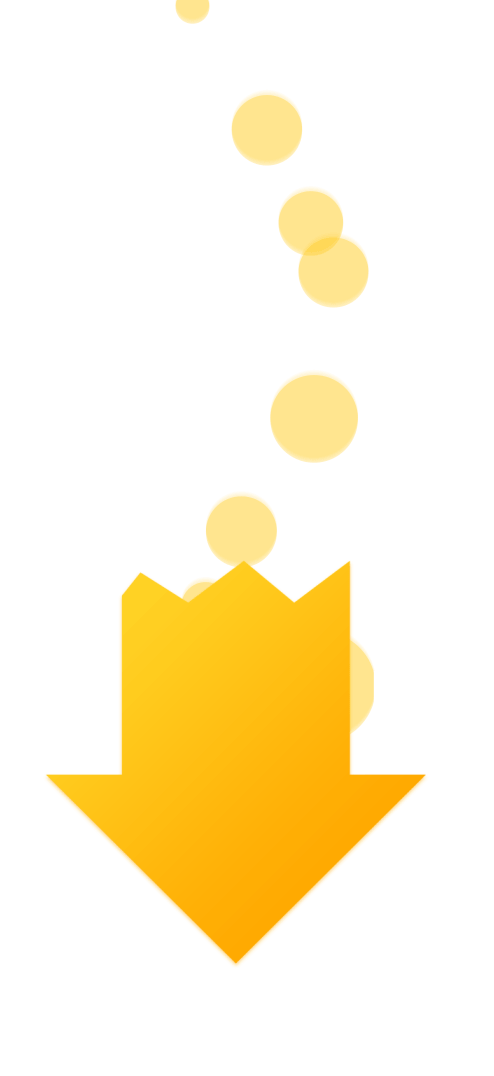 From the table, it can be seen that although Saffron and Carthamus have similarities in taste and meridian entry, they also have significant differences.
From the table, it can be seen that although Saffron and Carthamus have similarities in taste and meridian entry, they also have significant differences. Different Origins:
Different Origins:
Saffron is originally from Central Asia and Europe, later introduced to the mainland via Tibet, while Carthamus is produced domestically.
 Different Prices:
Different Prices:
Saffron is significantly more expensive than Carthamus.
 Different Families and Medicinal Parts:
Different Families and Medicinal Parts:
Saffron is the stigma of the Iridaceae family Crocus sativus, while Carthamus is the flower of the Asteraceae family Carthamus tinctorius; they are different parts of different plants from different families.
 Different Efficacies:
Different Efficacies:
Carthamus tends to invigorate blood and alleviate pain, while Saffron, although having a stronger blood-invigorating effect, does not have pain-relieving properties.
However, Saffron has the effect of soothing the liver and relieving depression, as noted by Li Shizhen in the Compendium of Materia Medica: “Saffron (Crocus sativus) makes the heart joyful when consumed in large amounts,” indicating that Saffron can relieve depression and clear the heart, which Carthamus does not.

Carthamus looks like this
After all this discussion,
what do they actually look like?
Let’s take a look!

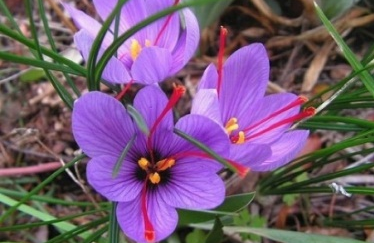 Saffron
Saffron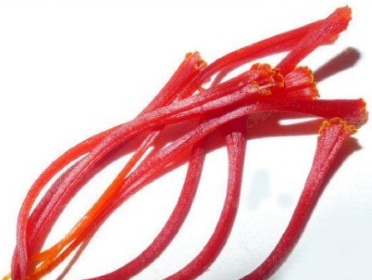
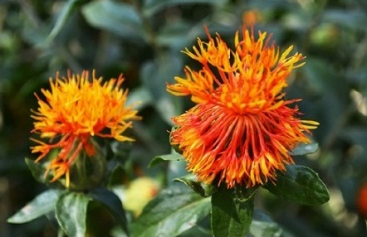 Carthamus
Carthamus

We can see that Saffron is dark red, while Carthamus is orange-red, and they look completely different. Everyone, please take note that they are two distinct plants!
How to Distinguish?
In addition to distinguishing by origin and characteristics, we can also differentiate the two through microscopic features and ultraviolet absorption spectra.Common physical and chemical identification methods, such as the water test:
Saffron▼▼▼▼▼▼▼▼▼▼▼▼▼▼▼▼▼▼▼▼▼▼▼▼▼▼▼▼▼▼▼▼▼▼▼▼▼▼▼▼▼▼▼▼▼▼▼
Soak a sample of Saffron in water, and you will see an orange-yellow color descending in a straight line, gradually diffusing, dyeing the water yellow, with no sediment. The stigma appears trumpet-shaped, with fine teeth at the edge, one end thin and the other thick (dragon head and phoenix tail), and it will not break easily when prodded with a needle in a short time. (As shown in the video)

▲▲▲▲▲▲▲▲▲▲▲▲▲▲▲▲▲▲▲▲▲▲▲▲▲▲▲▲▲▲▲▲▲▲▲▲▲▲▲▲▲▲▲▲▲▲▲▲▲▲▲▲▲▲▲▲▲▲▲▲▲▲▲Carthamus▼▼▼▼▼▼▼▼▼▼▼▼▼▼▼▼▼▼▼▼▼▼▼▼▼▼▼▼▼▼▼▼▼▼▼▼▼▼▼▼▼▼▼▼▼▼▼
Place a sample of Carthamus in water, and no orange-yellow pigment will descend in a straight line; the water will eventually be dyed golden yellow.
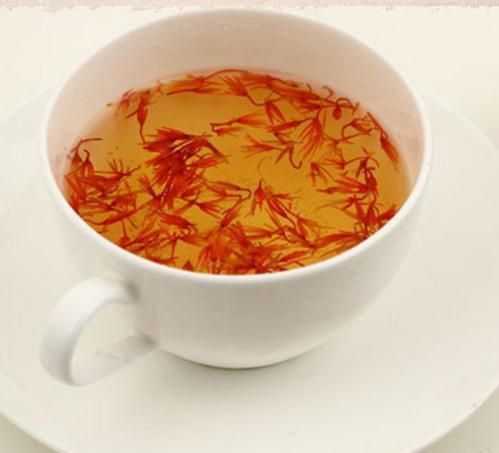
▲▲▲▲▲▲▲▲▲▲▲▲▲▲▲▲▲▲▲▲▲▲▲▲▲▲▲▲▲▲▲▲▲▲▲▲▲▲▲▲▲▲▲▲▲▲▲▲▲▲▲▲▲▲▲▲▲▲▲▲▲▲▲
Having seen this,
I believe everyone now has a general understanding of the differences between Saffron and Carthamus.


2. Counterfeits of Saffron and Identification
Counterfeits▼▼▼▼▼▼▼▼▼▼▼▼▼▼▼▼▼▼▼▼▼▼▼▼▼▼▼▼▼▼▼▼▼▼▼▼▼▼▼▼▼▼▼▼▼▼▼
Saffron is scarce and expensive, leading to frequent counterfeits in the market, such as: Carthamus products, lotus stamen products, corn silk products, dandelion flower products, paper products, carrot shreds, daylily products, etc.
▲▲▲▲▲▲▲▲▲▲▲▲▲▲▲▲▲▲▲▲▲▲▲▲▲▲▲▲▲▲▲▲▲▲▲▲▲▲▲▲▲▲▲▲▲▲▲▲▲▲▲▲▲▲▲▲▲▲▲▲▲▲▲Such a variety of counterfeits is truly astonishing!~~
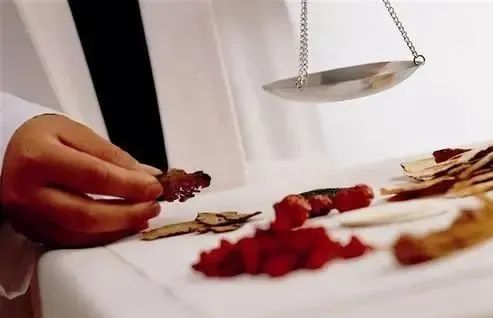
How can we prevent buying fake Saffron?
Here are some practical tips for identifying genuine Saffron:
|
Genuine Product |
Counterfeit Product |
|
|
1 Place a small sample in cold water |
Water turns yellow immediately |
Water turns red |
|
Will not mix in water over time |
Will mix in water |
|
|
No oily film on the water surface |
Oily substances float on the surface |
|
|
Forms a funnel shape in water |
Not funnel-shaped |
|
|
After soaking, it is not easily crushed when stirred with a needle or stick |
Counterfeits with starch are easily crushed |
|
|
2 Take a small sample, wrap it in tissue, and squeeze hard |
No oil stain on the tissue |
Counterfeits with mineral or vegetable oil leave oil stains on the tissue |
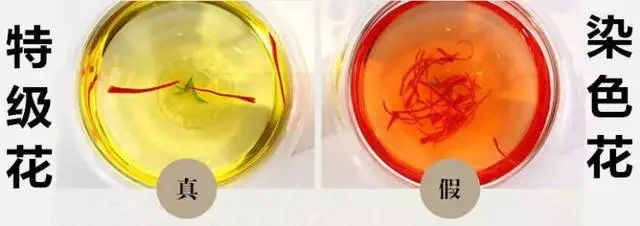 Identifying authenticity to prevent counterfeits,now everyone should have a clearer idea, right?It won’t be so easy for unscrupulous merchants to deceive us!
Identifying authenticity to prevent counterfeits,now everyone should have a clearer idea, right?It won’t be so easy for unscrupulous merchants to deceive us!
Finally, please remember that Saffron has powerful effects, but it should not be used indiscriminately! Otherwise, the consequences can be serious! Please follow medical advice if you need to use it.
 END
END Scan to follow us for more exciting content
Scan to follow us for more exciting content
Disclaimer
The “yd2y Pharmacy Department” public account is a non-profit public platform primarily used for promoting pharmaceutical science knowledge. Some of the content published is sourced from the internet, and we will indicate the source for any works that have a clear origin. If there are any unmarked sources or incorrect attributions that infringe on the original author’s copyright, please call 022-88329039, and we will promptly delete the corresponding article. We also welcome everyone to reprint our original articles.
Contributed by | Zhang Lingyan
Edited by | Zhao JunyuReviewed by | Du Peng, Wang Ronghuan

